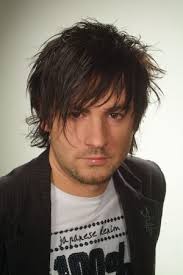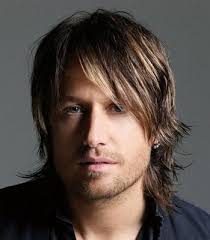Long Mens Hairstyles Bipography
Source:- Google.com.pk
Hair explores many of the themes of the hippie movement of the 1960s. Theatre writer Scott Miller described these themes in terms of the hippies' goals, targets and beliefs, as follows:[T]he youth of America, especially those on college campuses, started protesting all the things that they saw wrong with America: racism, environmental destruction, poverty, sexism and sexual repression, violence at home and the war in Vietnam, depersonalization from new technologies, and corruption in politics.... Contrary to popular opinion, the hippies had great respect for America and believed that they were the true patriots, the only ones who genuinely wanted to save our country and make it the best it could be once again.... [Long] hair was the hippies' flag – their... symbol not only of rebellion but also of new possibilities, a symbol of the rejection of discrimination and restrictive gender roles (a philosophy celebrated in the song "My Conviction"). It symbolized equality between men and women. In addition... the hippies' chosen clothing also made statements. Drab work clothes (jeans, work shirts, pea coats) were a rejection of materialism. Clothing from other cultures, particularly the Third World and native Americans, represented their awareness of the global community and their rejection of U.S. imperialism and selfishness. Simple cotton dresses and other natural fabrics were a rejection of synthetics, a return to natural things and simpler times. Some hippies wore old World War II or Civil War jackets as way of co-opting the symbols of war into their newfound philosophy of nonviolence.Extending the precedents set by Show Boat (1927) and Porgy and Bess (1935), Hair opened the Broadway musical to racial integration; fully one-third of the cast was African American.Except for satirically in skits, the roles for the black members of the tribe portrayed them as equals, breaking away from the traditional roles for blacks in entertainment as slaves or servants. An Ebony magazine article declared that the show was the biggest outlet for black actors in the history of the U.S. stage.Several songs and scenes from the show address racial issues."Colored Spade", which introduces the character Hud, a militant black male, is a long list of racial slurs ("jungle bunny... little black sambo") topped off with the declaration that Hud is the "president of the United States of love". At the end of his song, he tells the tribe that the "boogie man" will get them, as the tribe pretends to be frightened. "Dead End", sung by black tribe members, is a list of street signs that symbolize black frustration and alienation ("keep out... mad dog... hands off"). One of the tribe's protest chants is "What do we think is really great? To bomb, lynch and segregate!""Black Boys/White Boys" is an exuberant acknowledgement of miscegenation;the U.S. Supreme Court had struck down laws against the practice in 1967. Another of the tribe's protest chants is "Black, white, yellow, red. Copulate in a king-sized bed.""Abie Baby" is part of the Act 2 "trip" sequence: four African witch doctors, who have just killed various American historical, cultural and fictional characters, sing the praises of Abraham Lincoln, portrayed by a black female tribe member, whom they decide not to kill. The first part of the song contains stereotypical language that black characters used in old movies, like "I's finished ... pluckin' y'all's chickens, fryin' mothers oats and grease" and "I's free now thanks to y'all Master Lincoln". The Lincoln character then recites a modernized version of the Gettysburg Address, while a white female tribe member polishes Lincoln's shoes with her blond hair.The many references to Native Americans throughout the script are part of the anti-civilization, anti-consumerism, naturalism focus of the hippie movement and of Hair. The characters in the show are referred to as the "tribe", borrowing the term for Native American communities. The cast of each production chooses a tribal name: "The practice is not just cosmetic ... the entire cast must work together, must like each other, and often within the show, must work as a single organism. All the sense of family, of belonging, of responsibility and loyalty inherent in the word "tribe" has to be felt by the cast." To enhance this feeling, O'Horgan put the cast through sensitivity exercises based on trust, touching, listening and intensive examination that broke down barriers between the cast and crew and encouraged bonding. These exercises were based on techniques developed at the Esalen Institute and Polish Lab Theater.The idea of Claude, Berger and Sheila living together is another facet of the 1960s concept of tribe.
Long Mens Hairstyles Free Pictures Pics Images Photos 2013
 Long Mens Hairstyles Free Pictures Pics Images Photos 2013
Long Mens Hairstyles Free Pictures Pics Images Photos 2013
 Long Mens Hairstyles Free Pictures Pics Images Photos 2013
Long Mens Hairstyles Free Pictures Pics Images Photos 2013
 Long Mens Hairstyles Free Pictures Pics Images Photos 2013
Long Mens Hairstyles Free Pictures Pics Images Photos 2013
 Long Mens Hairstyles Free Pictures Pics Images Photos 2013
Long Mens Hairstyles Free Pictures Pics Images Photos 2013
 Long Mens Hairstyles Free Pictures Pics Images Photos 2013
Long Mens Hairstyles Free Pictures Pics Images Photos 2013

Long Mens Hairstyles Free Pictures Pics Images Photos 2013
 Long Mens Hairstyles Free Pictures Pics Images Photos 2013
Long Mens Hairstyles Free Pictures Pics Images Photos 2013
 Long Mens Hairstyles Free Pictures Pics Images Photos 2013
Long Mens Hairstyles Free Pictures Pics Images Photos 2013
 Long Mens Hairstyles Free Pictures Pics Images Photos 2013
Long Mens Hairstyles Free Pictures Pics Images Photos 2013

Long Mens Hairstyles Free Pictures Pics Images Photos 2013


Long Mens Hairstyles Free Pictures Pics Images Photos 2013
Long Mens Hairstyles Free Pictures Pics Images Photos 2013

Long Mens Hairstyles Free Pictures Pics Images Photos 2013

Long Mens Hairstyles Free Pictures Pics Images Photos 2013
Long Mens Hairstyles Free Pictures Pics Images Photos 2013
Long Mens Hairstyles Free Pictures Pics Images Photos 2013

Long Mens Hairstyles Free Pictures Pics Images Photos 2013

Long Mens Hairstyles Free Pictures Pics Images Photos 2013
No comments:
Post a Comment